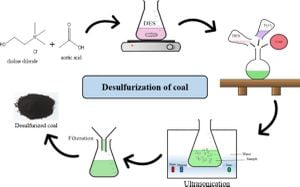Tropical Cyclone Zelia has formed off the north-west coast of Western Australia and is poised to impact the region this week, prompting serious preparations among local residents. The cyclone, currently classified as category 2, is gaining strength as it moves slowly toward the east Pilbara coast, complicting forecasts.
Initially situated about 320 kilometers north-northeast of Port Hedland, Cyclone Zelia is tracking southward at approximately 8 km/h, according to the Bureau of Meteorology (BOM). Meteorologists anticipate it could escalate to category 3 before making landfall on Friday, with significant rainfall totals expected to exceed 500 millimeters across the affected areas.
Warnings have been issued to residents between Port Hedland and Broome, signifying the potential for dangerous storm tides as Zelia approaches. BOM state manager James Ashley emphasized the irregular movements of the cyclone, stating, "We expect this system will take quite a bit of a wobble to the west before resuming its southward motion". Given this uncertainty, residents are urged to remain vigilant and prepared for rapidly changing conditions.
The cyclone is expected to produce locally intense rainfall, with flash flooding likely across regions from Bidyadanga to Port Hedland and inland areas. Reports indicated rainfall began accumulating on Tuesday night, with Port Hedland receiving 75mm, followed by Pardoo with 82mm recorded. Pastoralists are eagerly awaiting this rain, which is significant for the usually dry conditions during the northern summer months.
On Wednesday, Cyclone Zelia was characterized by sustained winds near the center of 95 km/h and gusts reaching up to 130 km/h. By Thursday, these gusts are likely to increase, with destructive winds up to 160 km/h anticipated between Bidyadanga and Port Hedland.
Residents are also advised of the risk of storm surges, with tides projected to rise significantly above the normal high-water mark, resulting in damaging floods near the shoreline. Dutch native David Stoate, from Anna Plains Station, said, "We’re used to seeing cyclones around here. I’m just hoping for the rain rather than heavy winds this time." Indeed, for many locals, cyclones are part of life on the cyclone-prone coast of Australia.
Officials have begun preparations for road closures as emergency services assess the situation. According to the Department of Fire and Emergency Services (DFES), the Great Northern Highway and North West Coastal Highway may be closed as precautionary measures, affecting travel and transport.
DFES Commissioner Darren Klemm emphasized the importance of readiness, warning local residents of the necessity to finalize their emergency preparations. He stated, “If we see winds above 125 km/h, we’ll escalate to the ‘watch and act’ phase, meaning residents should be finalizing emergency activities, not starting them.” Clear communication has been established, and communities are urged to download the Emergency WA app for real-time updates.
Local ports are reacting proactively – Port Hedland commenced clearing all vessels from harbor waters as early as Wednesday to prepare for the storm's arrival. Heavy mining operations could also be impacted, as Zelia’s forecasted path is set to cross through major iron ore export hubs, which have already been affected by excessive rain from prior cyclones this year.
Despite the mounting threats associated with Cyclone Zelia, residents are encouraged to take necessary precautions seriously and avoid panic. Local authorities have highlighted the significance of securing outdoor items and ensuring emergency kits are fully stocked. Emergency evacuation centers are being established, should conditions deteriorate rapidly.
Travelers and tourists are also being advised to reassess their plans, as the region's weather conditions could change dramatically over the next few days. Bryan and Jenny Jenner, travelers who planned to stay at Port Hedland, were prompted to store their caravan and seek local accommodations for safety, stating, "We've been told all residents have to pack out and get out, so that's what we're doing."
To stay informed about Cyclone Zelia’s developments and to receive direction for emergencies, residents and visitors are encouraged to follow the BOM updates and heed warnings issued. The cyclone season spans from November to April, yet the arrival of Zelia introduces significant challenges and disruptions for many dependent on the region's economy and infrastructure.
With all preparations underway and warnings on high alert, communities along the Pilbara and Kimberley coasts brace for what could be one of the season's first major events, keeping watch over the ever-changing path of Cyclone Zelia.



